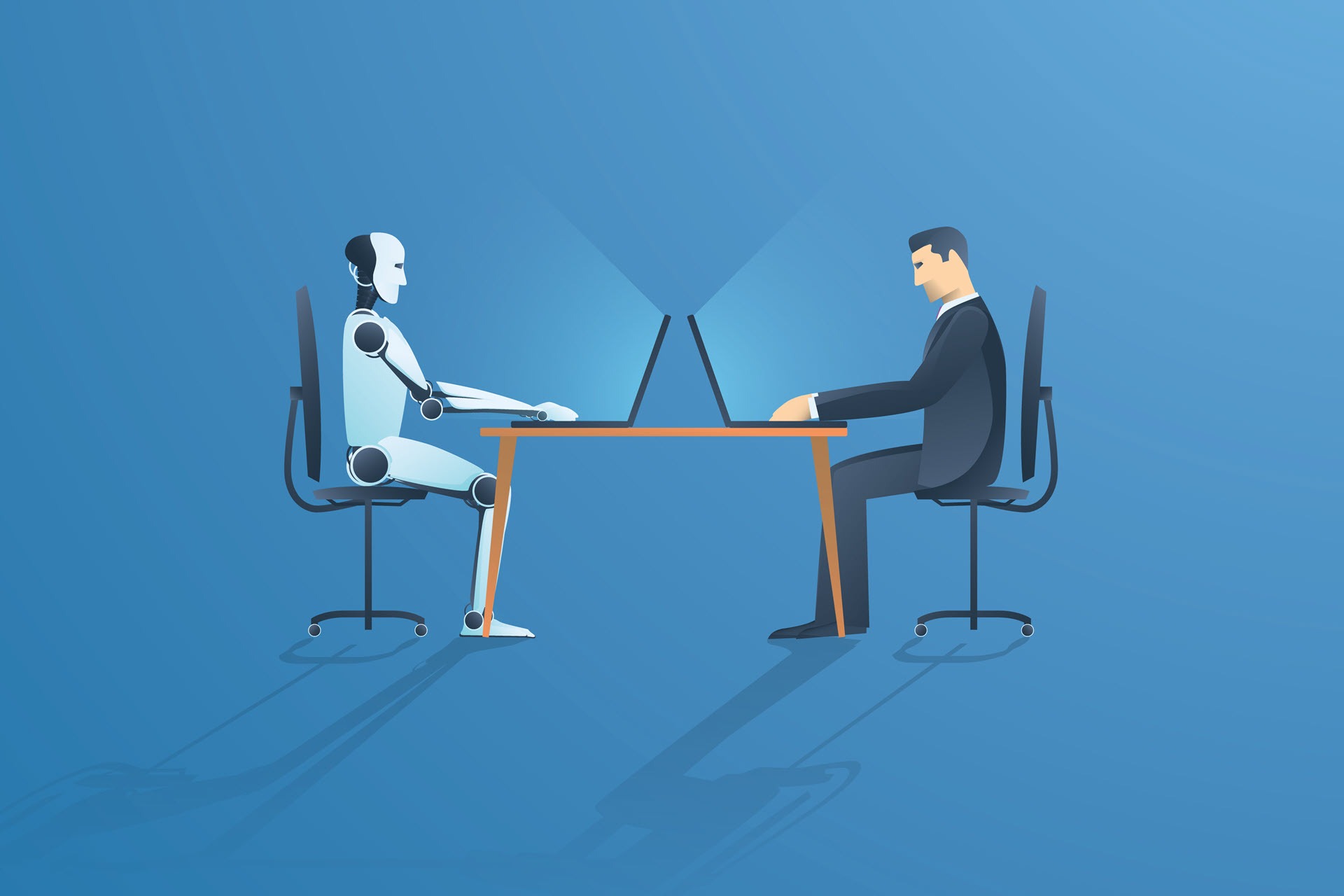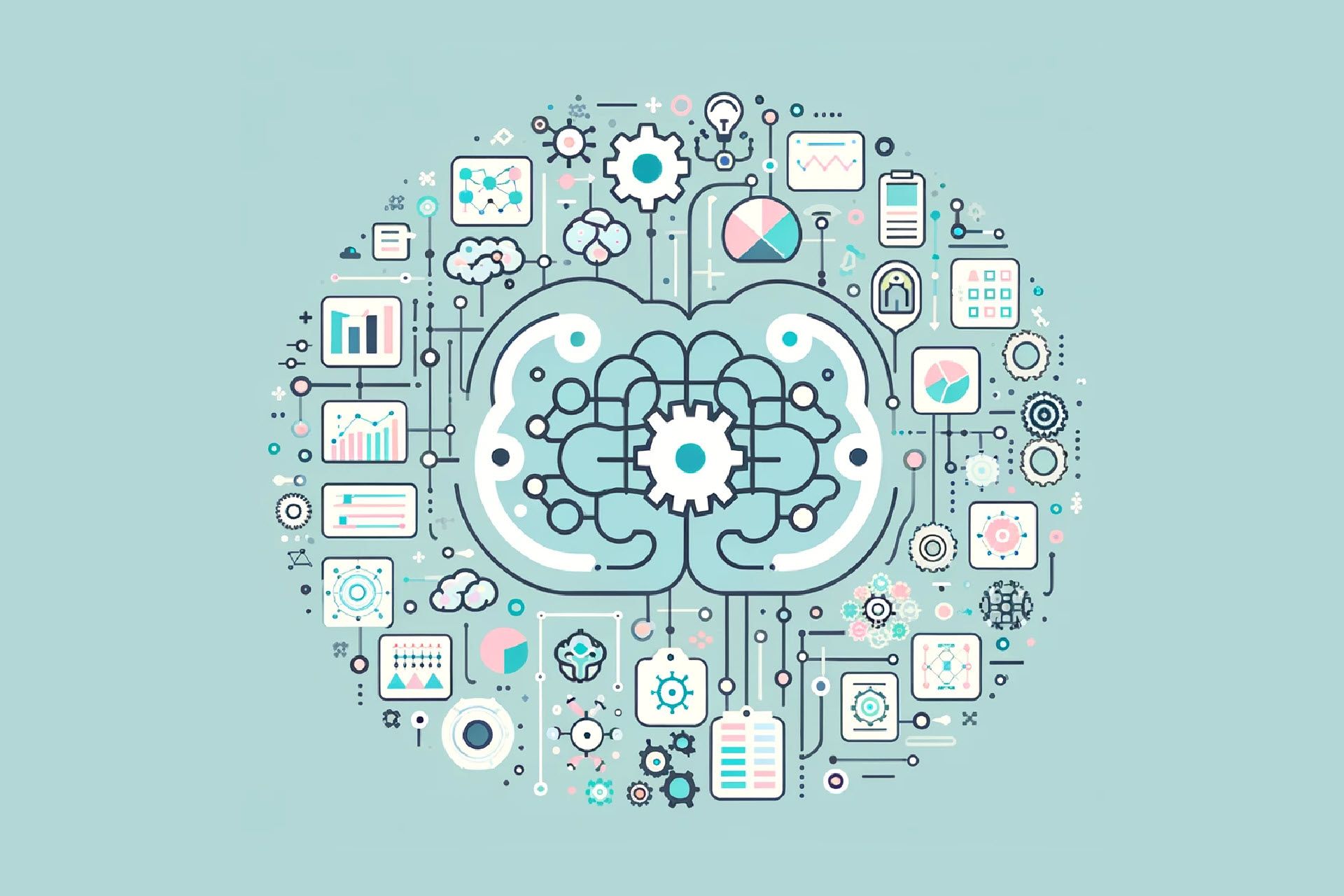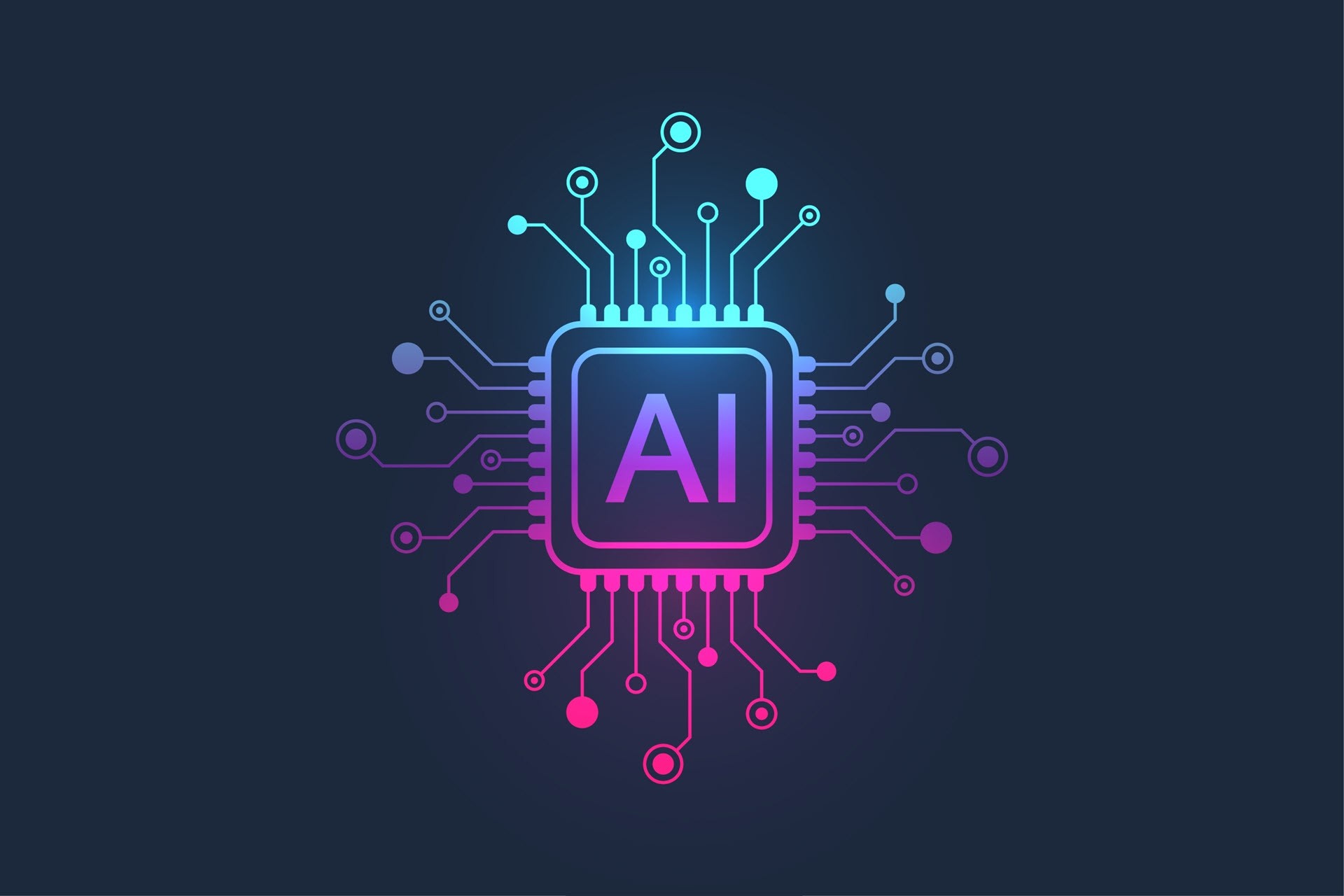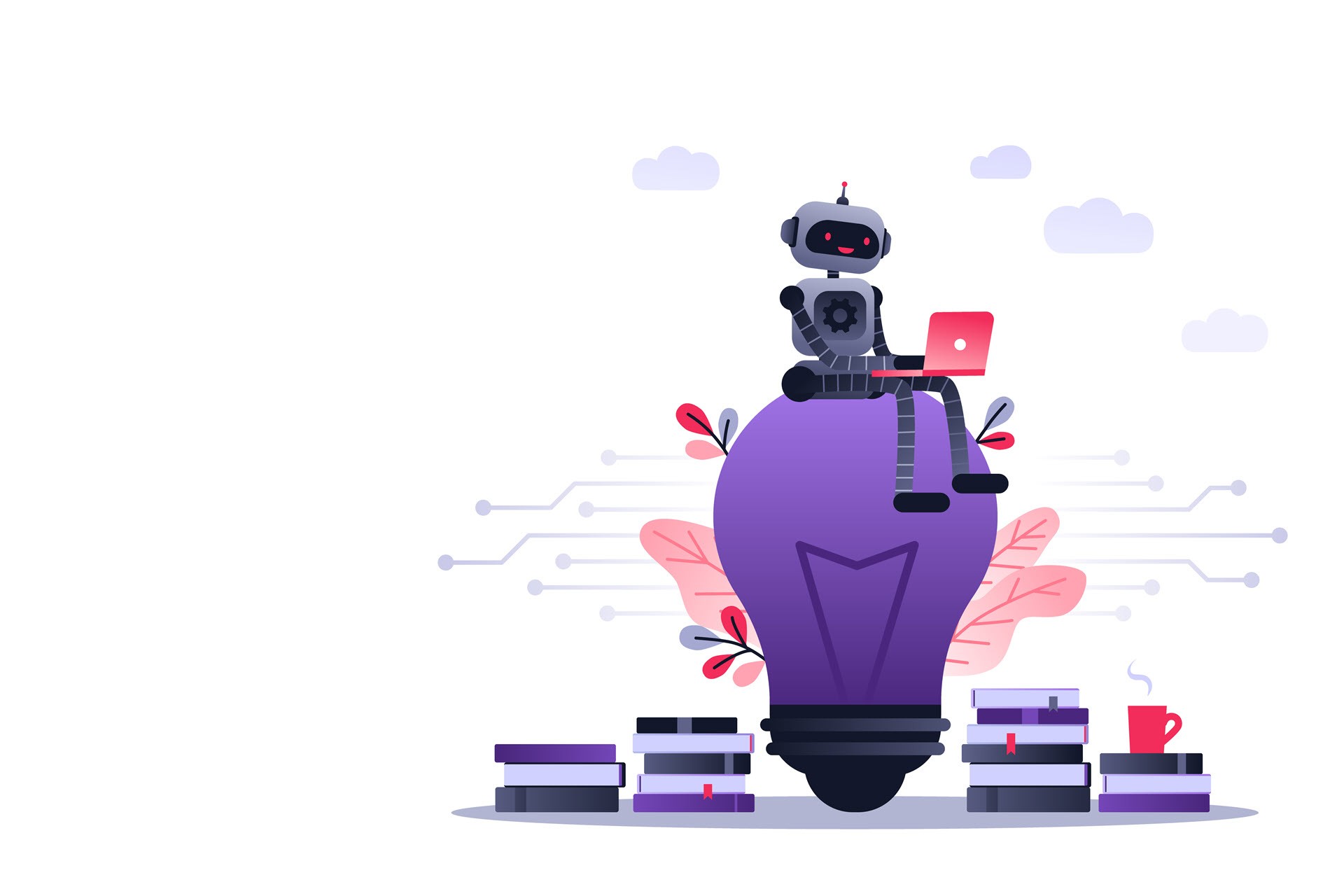Artificial intelligence (AI) has become a transformative force across most industries and is rapidly revolutionizing the way we work. However, amid all the advancements, it's crucial to understand that AI also introduces a fair share of problems.
Job displacements, overreliance on AI tools, and opportunities for misuse are the best-known AI-related issues, but they are not the only risks that should concern us. AI has a considerable line of potential dangers we must be aware of if we want to ensure this tech does more good than harm in the long run.
This article takes you through all the major artificial intelligence dangers you must know about. Read on to get a clear picture of the potential risks associated with the rapid advancement and widespread use of artificial intelligence technologies.
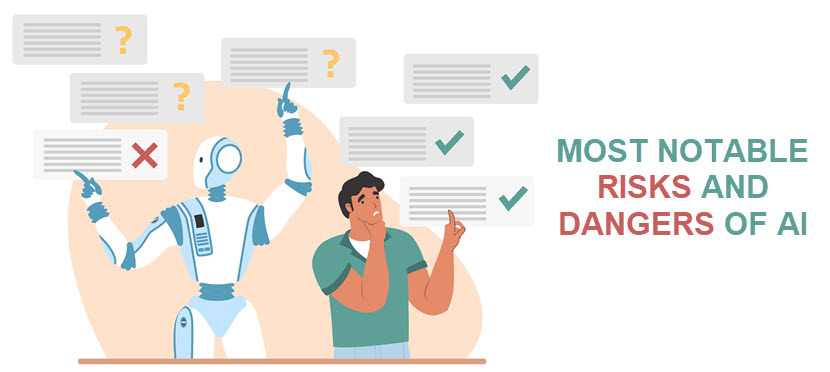
Want to learn exactly how AI works? Our articles on neural networks and deep nets (DNNs) explain how these systems use artificial neurons to simulate human-like cognitive skills.
What Are the Risks of Using AI?
While artificial intelligence offers a range of advantages, the benefits of AI come with a high price. Below is a close look at the 14 biggest artificial intelligence dangers you must know about before using this cutting-edge technology.
Lack of Transparency and Explainability
Lack of transparency in AI, often referred to as the black box problem, is a significant concern that can have various negative implications.
AI systems, particularly those based on complex deep learning models, often make decisions that are difficult to interpret or understand. The layers of computations and the large number of parameters involved make it challenging to trace how models arrive at certain outputs.
The lack of transparency in AI systems raises several difficult issues. Without transparency, it's difficult to ensure that AI systems adhere to ethical guidelines and legal standards. Users are also more likely to trust AI systems if they understand how they work. The lack of transparency significantly erodes this trust.
The black box problem is often a deal-breaker for organizations in more tightly regulated industries. Companies operating in these sectors must ensure high levels of transparency throughout their operations, which limits what these organizations can do with AI technologies.
Learn more about AI ethics and the current state of AI laws and recommendations.
Job Displacement
Job displacement is a significant danger associated with the rise of artificial intelligence. As AI continues to evolve and become more capable, it has the potential to disrupt labor markets and displace workers in various industries.
AI software and AI-enabled robotics are excellent at automating repetitive tasks. Automation of mundane tasks will likely lead to massive job losses in several sectors:
- Manufacturing. Automated assembly lines and robotic systems can perform tasks more efficiently than human workers, which could lead to a reduction in manufacturing jobs.
- Retail. Self-checkout systems and automated inventory management reduce the need for cashiers and stock clerks.
- Administrative jobs. AI-powered software can handle data entry, scheduling, and other routine administrative tasks, reducing the need for administrative assistants and clerks.
- Transportation. Autonomous vehicles and drones could disrupt jobs for drivers, delivery personnel, and pilots.
- Healthcare. AI diagnostic tools and robotic surgery assistants can perform certain medical tasks, reducing the need for specialized radiologists and surgeons.
- Customer service. AI-enabled chatbots and virtual assistants can handle customer inquiries, reducing the need for call center operators and customer service representatives.
- Finance. AI algorithms are increasingly being used for trading, risk management, and fraud detection, which will reduce the need for financial analysts and compliance officers.
The displacement of jobs due to AI could have broad economic and social implications. Widespread job displacement leads to higher unemployment rates, especially among workers whose skills are less adaptable to new roles.
Moreover, AI-induced job displacement could exacerbate economic inequality. Low-skilled workers will struggle to find new employment, while high-skilled workers who adapt to the new technological landscape will continue to prosper, widening the economic divide.
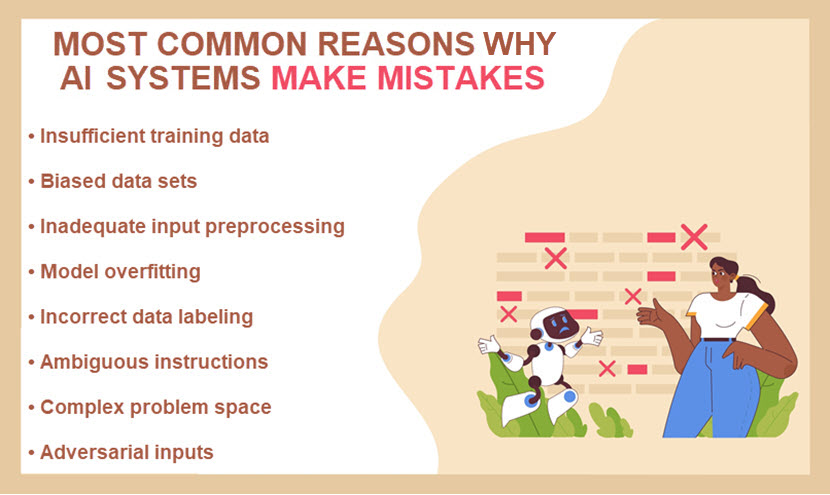
Data Privacy Concerns
The potential for privacy invasion is a significant danger posed by AI. AI systems rely on extensive data sets to train models and improve performance, and that data often includes sensitive user-related information such as:
- Personally identifiable information (PII).
- Browsing habits.
- Biometric data.
- Location data.
Once collected and fed into an AI model, data is often used in ways that individuals may not be aware of or have not consented to, such as:
- Behavioral profiling. AI can analyze data to create detailed profiles of individuals, predicting their behavior and preferences. Profiling can be used for targeted advertising or even influencing behavior.
- Unwanted data sharing. Personal data collected by one entity may be shared with or sold to third parties, increasing the risk of misuse.
AI applications in social media and e-commerce often collect and analyze private data to deliver more personalized experiences. This practice often leads to unwanted exposure of private data.
Addressing the privacy risks associated with AI requires a multifaceted approach that's not easy to implement. Here are the usual precautions:
- Limit the amount of collected data and ensure it is used only for agreed-upon purposes.
- Be transparent about data collection and usage practices.
- Implement strong security protocols to protect data from breaches, unauthorized access, and leakage.
- Give individuals the ability to opt out of data collection and request deletion.
Looking for a safe place to store valuable data? Check out pNAP's Data Security Cloud, our cloud-based platform that relies on numerous precautions to keep data safe (micro-segmentation, endpoint protection, MDR, integrated backups, etc.).
Bias and Discrimination
AI systems learn from provided training data, so models will reproduce any biases in the data used to train systems. Another way an AI system can become biased is if human developers who design, select, and interpret the results from AI systems reinforce certain outputs.
The impact of biased AI can be widespread and profound. Usual consequences of biased AI are:
- Discriminatory outcomes. AI systems used in hiring, lending, and law enforcement can make biased decisions that discriminate against certain groups.
- Erosion of trust. The trust in AI technologies diminishes if the public starts perceiving AI systems as biased or unfair.
- Perpetuation of inequality. Biased AI systems can reinforce and perpetuate existing societal inequalities. These issues make it harder for marginalized groups to achieve fair treatment.
The primary method of addressing bias and discrimination in AI involves ensuring training data is representative of all relevant groups. Regularly auditing AI systems for bias also helps mitigate discrimination. However, these precautions are highly difficult to implement when dealing with large data sets and complex AI models.
Cybersecurity Risks
AI technologies pose various cybersecurity risks that can have severe consequences for individuals and organizations. Artificial intelligence enables malicious actors to launch more sophisticated attacks, such as:
- Automated hacking. AI can automate the process of identifying and exploiting vulnerabilities in systems, making attacks faster and more efficient. For example, AI-powered software can autonomously scan a network for weaknesses and deploy suitable exploit kits without human intervention.
- Adaptive malware. AI enables the creation of malware that adapts to security measures in real time, changing its behavior to evade detection and maximize damage.
- NLP-based phishing. AI can generate compelling phishing emails and social media messages using natural language processing (NLP). NLP increases the likelihood of deceiving individuals into revealing sensitive information or downloading malicious software.
AI systems are also prime targets for attacks since they often handle large volumes of sensitive data. Cyber attacks on AI systems can result in the theft of personal data, intellectual property, and confidential business information.
AI also introduces two major new attack strategies that adopters must be aware of:
- Model inversions. During model inversion, attackers use outputs from an AI model to infer sensitive information. For example, a threat actor might reconstruct images of individuals from a facial recognition system's output.
- Adversarial attacks. In adversarial attacks, malicious actors manipulate input data to deceive the AI system, causing it to make incorrect decisions. This strategy is extremely dangerous in applications like autonomous driving, where an adversarial attack could cause a vehicle to misinterpret road signs.
Our article on cybersecurity best practices presents 22 tried-and-tested strategies for improving security levels.
Over-Dependence and De-skilling
Over-dependence and de-skilling are significant artificial intelligence dangers that could profoundly affect our skills development, job satisfaction, and overall competence.
Reliance on AI for decision-making can lead to a reduction in critical thinking and problem-solving skills among human workers, as they may defer to AI systems without questioning outputs. Over-reliance on AI also diminishes the role of human judgment and intuition, which are essential in situations requiring nuanced understanding and ethical considerations.
As AI takes over more tasks, employees may find fewer opportunities to develop new skills and hone current ones. Over time, this issue can lead to a degradation of expertise. Employees might also feel less accomplished and valued if their roles are heavily dependent on AI.
Over-dependence on AI also has consequences on an organizational level. If AI systems fail or are compromised, organizations heavily reliant on these technologies may experience significant disruptions and periods of downtime. This risk is heightened if employees lack the skills to manage tasks manually.
Additionally, organizations may struggle to adapt to new challenges and market changes if the workforce is de-skilled and unable to respond flexibly to situations that fall outside the scope of AI capabilities.
Hallucinations
AI hallucinations occur when AI systems generate incorrect, misleading, or nonsensical outputs that appear plausible. This phenomenon is particularly prevalent in generative AI models, such as those used in NLP and computer vision.
Several factors contribute to the occurrence of hallucinations, including the following:
- Low training data quality. The quality and diversity of training data significantly affect AI performance. Biases and errors in the data often cause hallucinations.
- Model complexity. More complex models are more prone to generating hallucinations because they often overfit on idiosyncrasies in the training data.
- Lack of understanding. Current AI generates outputs based on learned patterns rather than genuine comprehension. This lack of contextual understanding often leads to hallucinations.
Hallucinations can spread false information, contributing to misinformation and disinformation. Persistent hallucinations also erode trust in AI systems, making people skeptical of AI-generated outputs.
Hallucinations are a major danger when artificial intelligence is used for critical operations. These errors lead to poor decision-making in fields like healthcare, finance, and law, which could have tremendous consequences for the involved parties.
Despite the threat of hallucinations, AI has managed to be highly helpful in many industries, as explained by our artificial intelligence examples article.
Environmental Consequences
High energy consumption and the associated environmental consequences are among the most notable artificial intelligence dangers. As AI systems become more compute-hungry and widely adopted, their energy demands increase, which leads to various environmental impacts.
Training large AI models, especially deep learning models, requires substantial computational resources. The process involves running numerous iterations over vast data sets. Training a single large neural network can consume as much energy as a car over its lifetime.
AI workloads are typically run in data centers, which are already significant electricity consumers. The growth of AI exacerbates the demand for energy-intensive data centers, which need power not only for computation but also for cooling systems to manage server-generated heat.
The energy consumed by AI training and data centers often comes from non-renewable sources, contributing to greenhouse gas emissions and climate change. The carbon footprint of large-scale AI models is substantial and significantly undermines efforts to reduce global emissions.
Furthermore, the hardware required for AI, including specialized GPUs and TPUs, involves the extraction and processing of finite raw materials. This process can lead to environmental degradation, pollution, and depletion of natural resources.

Lack of Accountability
AI systems are highly complex and involve numerous components and vast amounts of data. This complexity often obscures the understanding of how specific outcomes are produced, making it difficult to identify where accountability lies if the system behaves unexpectedly or makes a mistake.
This issue will only grow as AI systems become more autonomous and start making decisions with minimal or no human intervention. If an autonomous AI system causes harm to somebody or makes a poor decision, it is unclear who should be accountable for what happened.
Current legal and regulatory frameworks are not well-equipped to handle the unique challenges posed by AI. Establishing accountability is legally complex as traditional liability concepts do not directly apply to autonomous or semi-autonomous systems.
Opportunities for Misuse
Misuse of AI technologies represents a significant danger with potentially severe consequences.
As stated earlier, AI enables criminals to launch sophisticated attacks, such as highly adaptable and automated hacking programs and malware. These malicious programs are more difficult to detect and defend against than any traditional attack tactic.
The creation of deepfakes is another massive concern. AI-generated deepfakes create realistic images, videos, and audio recordings. Deepfakes can be used for blackmail, misinformation, political manipulation, and undermining public trust in media and communications.
AI can also facilitate sophisticated social engineering attacks by generating targeted emails, voice messages, or chatbot interactions designed to deceive individuals into divulging sensitive data or performing unwanted actions.
Check out our article on social engineering examples to see just how devious and creative malicious actors get when they identify a suitable target.
Concentration of Power
As things currently stand in the AI market, a few large corporations will wield disproportionate influence and control due to their ownership of advanced AI technologies. This concentration of power will manifest in various ways and pose significant societal, economic, and ethical challenges.
Companies with extensive AI capabilities can dominate markets by leveraging data insights, operational efficiencies, and superior customer experiences derived from AI. Additionally, these entities have access to vast amounts of data, which enables organizations to create data monopolies and gives them significant advantages in developing AI-based services.
The high cost of developing and deploying AI technologies can also create barriers to entry for smaller companies and startups, stifling competition and innovation. This problem will likely lead to monopolistic practices and reduced consumer choice.
Autonomous Weapons
Autonomous weapons are a subset of AI technology specifically designed for military applications. These weapons have the capability to identify and engage enemy combatants or targets without direct human intervention or approval.
The development of autonomous weapons poses significant ethical, legal, and security questions. Here are the main problems surrounding autonomous AI-powered weaponry:
- Lack of human judgment. Autonomous weapons operate based on algorithms and require no human oversight in critical decision-making moments. There are serious ethical questions about the morality of delegating life-and-death decisions to machines.
- Potential for unintended harm. AI systems may misidentify targets, leading to unintended casualties and humanitarian crises. The inability of autonomous weapons to fully understand complex human contexts can exacerbate these risks.
- Ethical accountability. Determining responsibility for the actions of autonomous weapons is challenging. If something goes wrong, who should we hold accountable: the developers, manufacturers, or operators? Or the AI itself, in which case it's unclear how exactly we should reprimand a computer program.
- Escalation dynamics. Autonomous AI-based weapons may escalate conflicts unintentionally if they respond to perceived threats or actions in ways that humans might not anticipate or intend.
As an extra artificial intelligence risk, the proliferation of autonomous weapons could lead to a potential arms race among nations seeking to gain a military advantage through AI technologies.
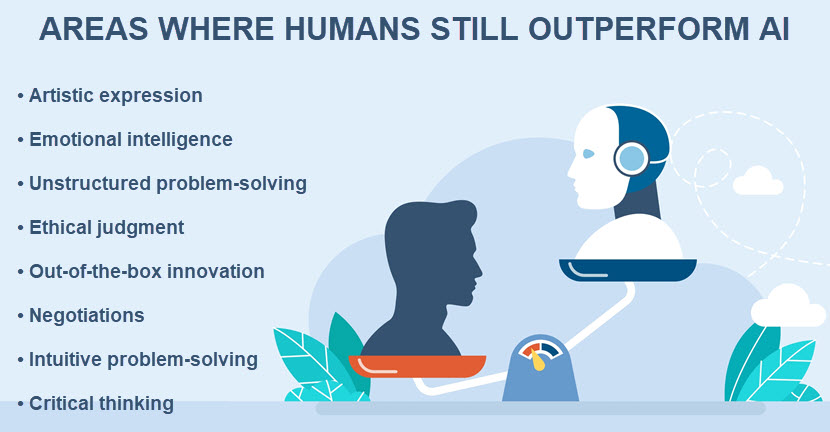
Unclear Legal Regulation
Since there are still no clear regulations concerning the use of AI, businesses often struggle to understand the legal implications of launching AI products and services. This uncertainty can discourage companies from pursuing AI projects or expanding their AI capabilities.
A lack of standardized regulations across different jurisdictions is also causing problems and inconsistencies. Companies operating internationally face difficulties complying with varying regulations, leading to increased compliance costs and operational complexities.
The lack of regulatory oversight can lead to the deployment of harmful or outright dangerous AI systems. This issue can result in ethical breaches, human rights violations, and public backlash against AI technologies.
Legal ambiguity also creates a risk-averse atmosphere where organizations are hesitant to innovate due to fear of future regulatory repercussions.
Autonomy and Control Concerns
As AI systems become more sophisticated, ensuring they behave as intended and remain under human control becomes increasingly complex.
AI systems, especially those using machine learning (ML) models, can develop behaviors that were not explicitly programmed by admins. This issue can lead to:
- Unexpected actions. AI systems may perform counterproductive or harmful actions if they misinterpret goals or the context in which they operate.
- Reinforcement of undesirable patterns. AI might learn and reinforce harmful behavior patterns if these are present in the provided training data.
Ensuring that humans stay in control of AI systems is a significant challenge. Implementing effective fail-safes or kill switches to shut down AI systems in case of malfunction or undesirable behavior is crucial, but technically challenging to create.
Our supervised vs. unsupervised machine learning article compares the two most common methods of training AI to perform new tasks.
Will AI Do More Harm Than Good?
The question of whether AI will do more harm than good is multifaceted and highly debatable. The answer is not clear-cut, so it's vital to be aware of both sides of the argument.
Many feel like the potential of AI is too good to ignore, despite the potential dangers. The most notable benefits of AI are:
- Drastically improved efficiency and productivity. AI can automate repetitive tasks to increase efficiency and boost overall productivity. AI is also far less likely to make mistakes than a human employee.
- High processing speeds. AI systems can analyze vast amounts of data with more speed and accuracy than any human analyst.
- In-depth data analysis. AI is excellent at discovering data insights that are undetectable to humans and other computing methods.
- Enhanced decision-making. The ability to quickly process data and stay up 24/7 aids in making timely and correct decisions.
On the other hand, AI comes with more than a few potentially catastrophic drawbacks, as we discussed above. Here's what we could do to improve the odds of avoiding the worst scenarios:
- Establish clear ethical frameworks and regulatory guidelines to govern the development and use of AI technologies.
- Promote transparency in AI systems to ensure their decisions are sufficiently explainable.
- Invest adequate time and effort into maintaining human oversight and control over AI systems.
- Encourage international cooperation and dialogue on AI governance to ensure ethical standards are upheld worldwide.
- Invest in reskilling programs to prepare the workforce for the changes brought about by AI.
In conclusion, whether AI will do more harm than good depends on how we develop and use the technology. Judging by how fast AI has been developing in recent times, we'll likely have a clearer picture of whether it was all worth it in a few years.
Do the Pros Outweigh the Cons? Only Time Will Tell
As the use of AI continues to grow across virtually all industries, it's imperative that we understand all the potential risks. Acknowledging and proactively addressing artificial intelligence dangers is the only way we'll be able to minimize the negative impacts of this revolutionary technology
